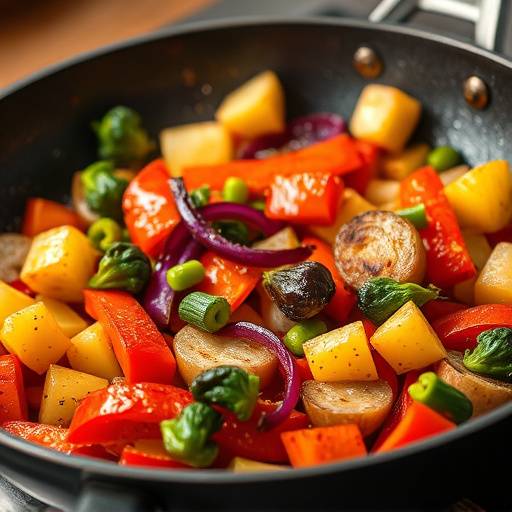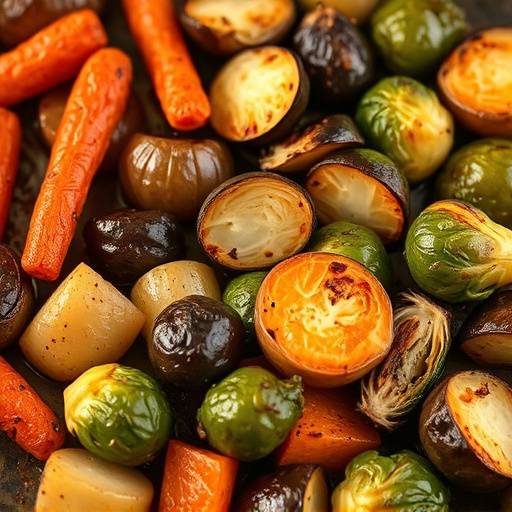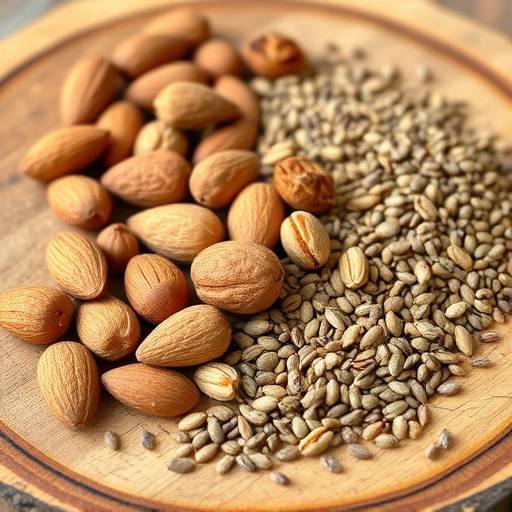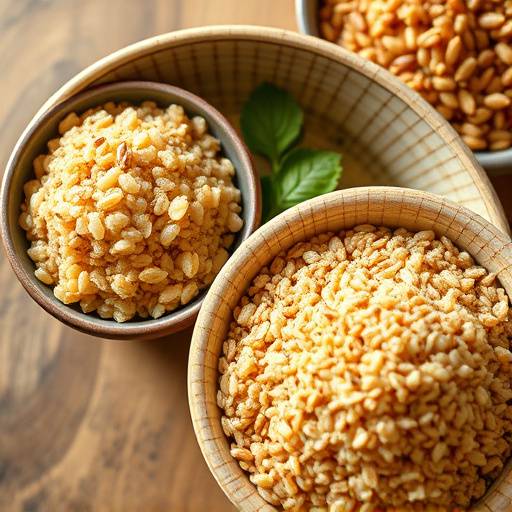Essential Vegetarian Cooking Techniques
Tofu Pressing Mastery
Tofu is a versatile protein source, but pressing it is crucial for achieving the right texture. Learn how to effectively press tofu using different methods, from simple weights to dedicated tofu presses, ensuring a firmer, more absorbent product for stir-fries, scrambles, and more. Pressing removes excess water, allowing tofu to soak up marinades and develop a crispy exterior when cooked.

The Art of Sautéing Vegetables
Sautéing is a quick and easy way to cook vegetables while retaining their vibrant color and crisp texture. Discover the secrets to proper sautéing, including using the right pan, maintaining the correct heat, and adding ingredients in the right order. This technique is perfect for side dishes, stir-fries, and adding vegetables to pasta or grain bowls.

Roasting for Flavor Intensification
Roasting brings out the natural sweetness and depth of flavor in vegetables. Learn how to roast different types of vegetables, including root vegetables, squashes, and cruciferous vegetables, to perfection. We'll cover essential tips like using the right temperature, tossing vegetables with oil and seasonings, and achieving a caramelized exterior.

Perfecting Vegetarian Soups and Stews
Master the art of creating hearty and flavorful vegetarian soups and stews. Discover essential techniques like building flavor with aromatics, using vegetable broth as a base, and incorporating different types of beans, lentils, and vegetables for a balanced and satisfying meal. Learn how to adjust seasonings and textures to create your signature soup or stew.

"The key to great vegetarian cooking is understanding how to extract the most flavor from your ingredients. Don't be afraid to experiment with different techniques and seasonings!"
Elena Rodriguez, Founder of Verdant Vista
Comprehensive Vegetarian Ingredient Guides
Exploring the World of Legumes
Legumes, including beans, lentils, and peas, are nutritional powerhouses and essential ingredients in vegetarian cuisine. Learn about different varieties of legumes, their unique flavor profiles, and best cooking methods. Discover how to properly soak and cook dried legumes, as well as creative ways to incorporate them into your meals.

Nuts and Seeds: A Guide to Healthy Fats
Nuts and seeds are excellent sources of healthy fats, protein, and essential nutrients. Learn about different types of nuts and seeds, their nutritional benefits, and how to use them in your cooking. From adding crunch to salads and granola to making nut-based sauces and desserts, nuts and seeds offer endless possibilities.

The Versatility of Whole Grains
Whole grains, such as quinoa, brown rice, and farro, are staples of a healthy vegetarian diet. Learn about the nutritional benefits of whole grains and how to cook them properly. Discover creative ways to incorporate them into salads, bowls, soups, and side dishes for a balanced and satisfying meal.

Understanding Plant-Based Dairy Alternatives
Explore the growing world of plant-based dairy alternatives, including almond milk, soy milk, oat milk, and coconut yogurt. Learn about their nutritional profiles, flavor characteristics, and best uses in cooking and baking. Discover how to choose the right plant-based dairy alternative for your needs and preferences.

Effective Vegetarian Meal Planning Tips
- Plan Your Meals in Advance: Take time each week to plan your meals, considering your schedule, dietary needs, and available ingredients.
- Create a Grocery List: Based on your meal plan, create a detailed grocery list to ensure you have all the necessary ingredients on hand.
- Prep Ingredients Ahead of Time: Chop vegetables, cook grains, and prepare sauces in advance to save time during the week.
- Batch Cook for Efficiency: Cook large batches of staples like beans, grains, and roasted vegetables to use in multiple meals throughout the week.
- Embrace Leftovers: Plan to repurpose leftovers into new and exciting dishes. Roasted vegetables can be added to salads, and leftover grains can be used in soups or bowls.
- Theme Your Meals: Use themes like "Meatless Monday" or "Taco Tuesday" to simplify meal planning and add variety to your diet.
- Explore Different Cuisines: Discover vegetarian dishes from around the world to expand your culinary horizons and add new flavors to your meal plan.
- Keep It Simple: Don't feel pressured to create elaborate meals every night. Simple dishes like pasta with vegetables or a bean burrito can be just as satisfying and nutritious.
| Day | Breakfast | Lunch | Dinner |
|---|---|---|---|
| Monday | Oatmeal with berries and nuts | Quinoa salad with roasted vegetables | Lentil soup with whole-wheat bread |
| Tuesday | Tofu scramble with spinach and mushrooms | Black bean burgers on whole-wheat buns | Vegetable curry with brown rice |
| Wednesday | Smoothie with plant-based protein powder | Leftover vegetable curry | Pasta with tomato sauce and basil |
| Thursday | Whole-grain toast with avocado and tomato | Chickpea salad sandwich on whole-wheat bread | Vegetable stir-fry with tofu |
| Friday | Yogurt with granola and fruit | Leftover vegetable stir-fry | Homemade pizza with vegetables and plant-based cheese |
| Saturday | Pancakes made with whole wheat flour | Veggie burgers with side salad | Vegetarian Chili with cornbread |
| Sunday | Breakfast burritos with tofu, peppers and onions | Leftover vegetarian chili | Roasted Vegetable Tart |
For more detailed meal planning tips and recipe inspiration, check out our Recipes section.